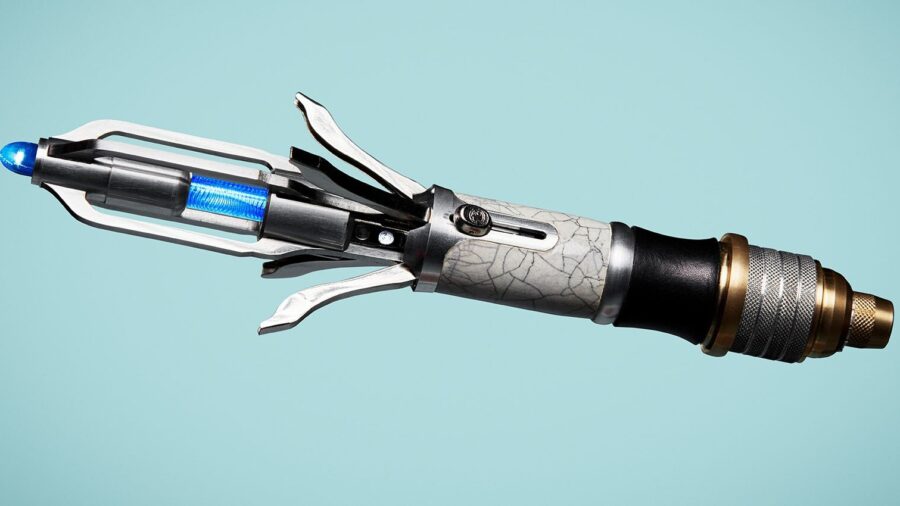How Doctor Who’s Sonic Screwdriver Works

In Doctor Who, there are a few things you can always count on the Doctor to have: the TARDIS, a Companion or two, and the Sonic Screwdriver. The latter is a powerful tool that has helped our hero out of more than a few jams in this BBC franchise, but the show has been vague enough about its functions that literally generations of fans have tried to figure out how the damn thing works.
Doctor Who’s second-most iconic tool, behind the TARDIS, is the sonic screwdriver, but explaining how it works depends a lot on which version of the Doctor you’re watching.
Now, you might want to warm up some fish fingers and custard and don your favorite bowtie because we’ve got the definitive breakdown of how the Sonic Screwdriver actually works.
The first thing you should know about this iconic device is that in the early days of Doctor Who, the Sonic Screwdriver was a much simpler tool than in the modern show and, accordingly, much easier to understand.
When it was first introduced back in the Second Doctor’s adventure Fury From the Deep, the device was true to its name and could only use sonic waves to complete various tasks. The most basic of these tasks included unlocking doors and disrupting equipment, and it could also emit ultrasonic waves fast enough that it could serve as a welding torch.

Somewhat ironically, early Doctor Who producers were wary of relying on the Sonic Screwdriver too much, which is why the Fourth Doctor uses it so little (though he did once use it as a “sonic lance” to detonate some pesky mines). It made a resurgence soon enough, but by season 18 of the classic Doctor Who series, writers and producers wanted to make it a less prominent part of the show.
They eventually did this in a most extreme way: an alien Terileptil destroys the Sonic Screwdriver in the adventure The Visitation, and under the orders of producer John Nathan-Turner, it never again appeared in classic Doctor Who.
Somewhat ironically, early Doctor Who producers were wary of relying on the Sonic Screwdriver too much, which is why the Fourth Doctor uses it so little (though he did once use it as a “sonic lance” to detonate some pesky mines).
However, the Sonic Screwdriver returned in the 1996 TV movie and later made a more prominent (and more permanent) return with the 2005 Doctor Who revival. Unfortunately, this is right around when the device’s functions stop being limited to its sonic design: over the course of the new show, we’d see the Sonic Screwdriver used to fix barbed wire, rig cellphones to work across time and space, serve as a microphone, and so much more.
This famous Doctor Who tool had come full circle, and the newer writers seemed quite eager to let the Sonic Screwdriver fix just about any problem.

Not wanting things to get completely out of hand, showrunner Russel T. Davies enacted a creative edict that the Sonic Screwdriver could never be used to provide the primary solution to an episode. He eventually went so far as to implement other restrictions, including the fact that the device doesn’t work on wood. Davies also memorably introduced the concept of “deadlock seals,” which functionally works as an in-universe shorthand to explain why the Doctor can’t open a lock like he normally would.
This famous Doctor Who tool had come full circle, and the newer writers seemed quite eager to let the Sonic Screwdriver fix just about any problem.
Once Doctor Who got a new showrunner in the form of Steven Moffat, the Eleventh Doctor got a Sonic Screwdriver with a major upgrade: a telepathic interface. In the episode “Let’s Kill Hitler,” Matt Smith reveals that all the Doctor has to do to operate the Sonic Screwdriver is to point it, hold down the button, and think of what he wants it to do.
It’s a fun nod to just how outrageously magical the device had become over time (which got even sillier with the introduction of the Twelfth Doctor’s Sonic Sunglasses), but it also makes further explanation impossible. Simply put, the Sonic Screwdriver does whatever the Doctor needs it to…until the writers make up a reason for it not to work.












